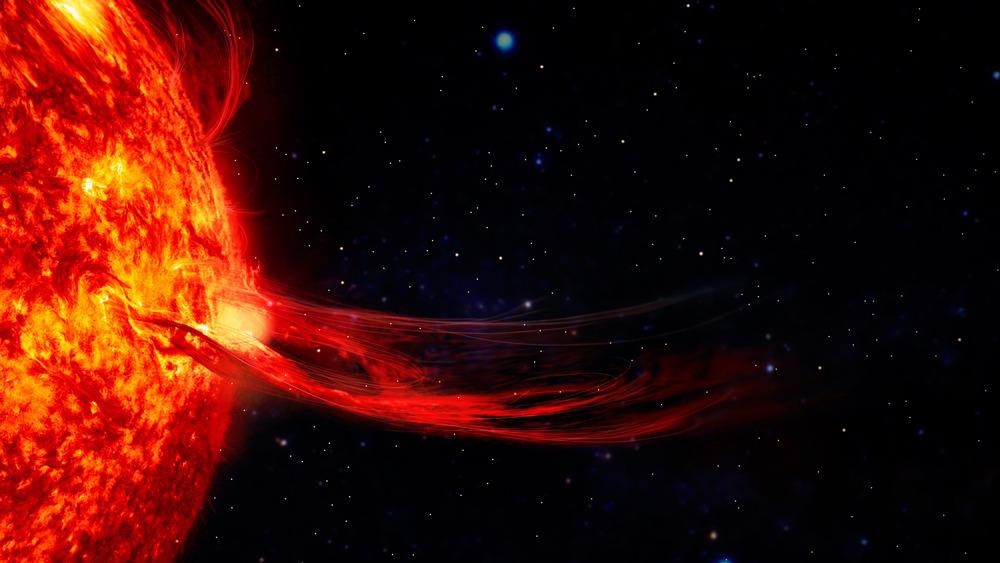The most powerful lasers in the world can reach up to 10 petawatts (10 quadrillion, or 10,000,000,000,000,000,000 watts) of emitted light. They are used to study extreme plasmas and other rare phenomena in the universe. However, scientists are also planning to build a 100 petawatt laser that will be used to tear energy from matter in empty space.

Image Credit: Lia Koltyrina/Shutterstock.com
The so-called Station of Extreme Light (SEL) in Shanghai, China, will be so powerful that it may disrupt the bond between energy and matter, proving Einstein’s theory that energy is somehow composed of matter (just as atomic reactions in nuclear bombs did with disastrous consequences in the 20th century). It is due for completion in 2023.
Meanwhile, the United States – whose laser capacity has recently been criticized for falling behind competitors in Asia and Europe – is close to finishing a 3-petawatt laser at the University of Michigan. The laser will start operations in 2022 and will be the most powerful laser in the United States.
This is a welcome, albeit belated move by American science funders. The United States was the forerunner in huge-scale laser technology, producing the first-ever petawatt laser in 1996.
But since then, scientists in other regions have been able to access even more laser power. China already has a 5.3-petawatt laser, in the Shanghai Superintense Ultrafast Laser Facility (SULF), while there are two 10-petawatt lasers in Europe.
The new laser at the University of Michigan, ZEUS (zettawatt-equivalent ultrashort pulse laser system) will build up power from an initial 0.5 petawatts to full capacity at 3 petawatts.
How Do High-Powered Lasers Work?
In 2018, the Nobel Prize in Physics was awarded to researchers Donna Strickland, Gérard Mourou, and Arthur Ashkin. The trio invented intense laser beams that can capture superfast processes and manipulate tiny objects. Their invention helped to drive progress in high-powered laser technology.
Laser components have also become much cheaper in recent years as the optics industry has rapidly responded to the sharply rising demand of the technology and communications industries. This recent sharp rise in demand was caused by the introduction of personal computers and smartphones.
Similarly, the enabling technology that makes lasers and laser-design work (computers, algorithms, nanomanufacturing, and so on) has also quickly become more powerful and cheaper over the last couple of decades.
To reach the multi-petawatt powers achieved in these advanced facilities, scientists have resorted to packing the laser pulse’s energy into shorter and shorter durations. This constrains the energy produced in each pulse, minimizing diffusion over time to have the more powerful instances of emission.
To do this, mirrors and amplification are employed to manipulate the light emitted by the laser. Titanium-doped sapphire crystals produce light across a large range of frequencies when used as amplifiers. Mirrors bounce the light pulses back and forth in a chamber, and each pulse’s frequency can be fine-tuned to cancel the other pulses out, combining the energy into one pulse of light only a few femtoseconds long.
10-petawatt power is created at SULF by pumping hundreds of joules of energy into those pulses. This is achieved with equipment that costs tens of millions of dollars and fits in a large room. SULF is a single cylinder of titanium-doped sapphire, about as wide as a dinner plate. The laser kindles light in the crystal and sends it through a system of lenses and mirrors, distilling it into those 10-petawatt pulses of light.
What are High-Powered Lasers Used for?
ZEUS is going to be used primarily for the study of extreme plasmas.
Extreme plasma is a highly energetic state of matter in which electrons break away from their atoms, leaving the positively charged nucleus behind.
ZEUS experiments will help us to understand this state of matter, and by extension to understand how the universe works on the subatomic level. This will help us to develop smaller and more efficient particle accelerators; these can be used for medical imaging as well as treatment.
SEL may be used to show how light can tear electrons away from positrons - ripping energy from matter in empty space. It would demonstrate the interchangeability of matter, converting heat and light into matter (in the reverse of nuclear weapons’ destructive sundering of matter into heat and light).
The Future of High-Powered Lasers
The next two years will see ZEUS and SEL making their first experiments. Soon after this, 10-petawatt laser facilities are expected to commence operations in Romania and the Czech Republic in Europe, part of the continent’s shared Extreme Light Infrastructure project.
In Russia, a 180-petawatt laser referred to as Exawatt Center for Extreme Light Studies (XCELS) has been designed. Japanese researchers have meanwhile proposed a more modest 30-petawatt device.
References and Further Reading
Andrei, M. (2021). Most powerful laser in U.S. to start operations in 2022. ZME Science. Available at: https://www.zmescience.com/science/most-powerful-laser-in-u-s-to-start-operations-in-2022/
Cartlidge, E. (2018). Physicists are planning to build lasers so powerful they could rip apart empty space. Science. Available at: https://www.science.org/content/article/physicists-are-planning-build-lasers-so-powerful-they-could-rip-apart-empty-space
NSF funding helps ZEUS laser prepare to power up. (2021). Optics.org. Available at: https://optics.org/news/12/8/20
Disclaimer: The views expressed here are those of the author expressed in their private capacity and do not necessarily represent the views of AZoM.com Limited T/A AZoNetwork the owner and operator of this website. This disclaimer forms part of the Terms and conditions of use of this website.